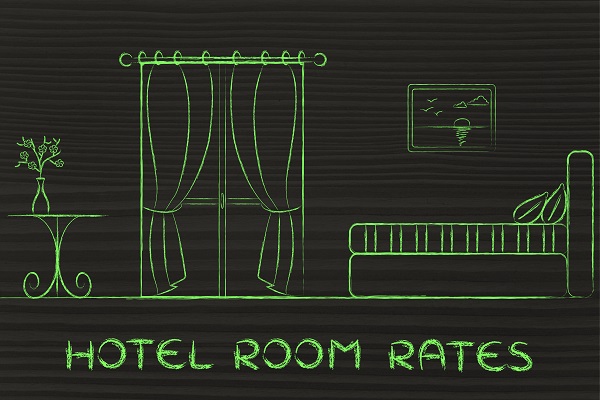
Industry
The new strata laws for New South Wales (part 2)
In last month’s AccomNews article, I summarised the proposed reforms proposed in the Strata & Community Title Law Reform Position Paper in relation to building governance. As foreshadowed in that article, further proposed reforms in relation to the built environment are set out below.
Summary of reforms – Managing the built environment:
| Reform | Current Law | New Law | |
| 1.1 | Encourage defects to be dealt with early. | Defect rectification does not have to be discussed at AGMs. | Defect rectification will be a compulsory agenda item for discussion at each AGM until the expiry of the statutory warranty periods as defined by the Home Building Act 1989. |
| 1.2 | Provide for an independent defects report. | An independent defects report is not required. | An independent defects report is prepared for the owners corporation. |
| 1.3 | Require a bond be paid by the developer. | The payment of a bond is not required. | The developer of a high-rise strata building (that is, buildings with more than three storeys) must pay a bond as assurance that defects will be rectified. This money will be held in trust until the independent inspector agrees that any identified defects have been fixed. |
| 1.4 | Restrict the right of developers to vote on defects matters. | The developer has the right to vote on defects matters, albeit with a reduced entitlement. | The right of developers or anyone connected to the developer to vote on matters relating to building defects will be removed. |
| 1.5 | Provide for a maintenance schedule. | No requirement for preparation of maintenance schedules. | The builder/developer will be required to prepare a maintenance schedule for the owners consideration. |
| 1.6 | Improve the disclosure of information about the building to the owners corporation. | The act lists the documents which a developer must provide to the owners corporation at the first AGM. | Developers will also be obligated to provide any documents that are reasonably necessary to enable or assist the owners corporation to run the scheme and maintain the building. |
| 1.7 | Establish a process to facilitate the collective sale or renewal of a strata scheme. | Strata schemes can be wound up with the unanimous support of owners or by an order of the Supreme Court. | A process to facilitate the collective sale or renewal of a strata scheme where there is less than unanimous support from the owners will be introduced with oversight by a strata commissioner. |
| 1.8 | Introduce a maintenance model by-law. | Owners corporations are ultimately responsible for maintenance of common property, but confusion can arise over the responsibilities of lot owners. | Schemes will be allowed to adopt a maintenance by-law based on a memorandum to be developed by the Strata Industry Working Group to aid the identification of common property items that the owners corporation is required to maintain. |
| 1.9 | Establish a common sense approach to owner renovations. | Owners must not alter common property without the approval of the owners corporation. Any changes to the common property must be approved by a special resolution. | New requirements with regard to owner renovations will be introduced, as follows: • work without consent will be allowed for minor cosmetic changes to the common property within a lot; • the committee is to be notified before other, more substantial changes are made to a lot; and • owners corporation approval will be needed for renovations that change the external appearance of a lot, are structural or permanent, that require development consent or are likely to have a significant impact on the amenity of other residents. |
| 1.10 | Clarify the definition of ‘structural cubic space’. | ‘Structural cubic space’ is currently defined as: • cubic space occupied by a vertical structural member, not being a wall, of a building; • any pipes, wires, cables or ducts that are not for the exclusive enjoyment of one lot and are in a building or in a part of a parcel that is not a building; and • any cubic space enclosed by a structure enclosing any such pipes, wires, cables or ducts. | This reform to the strata development laws is designed to clarify that pipes and other service lines that serve more than one lot remain common property for the full length of the service line. |
| 1.11 | Make it easier to create certain easements. A special resolution is required for the creation of easements. Provide that a general resolution is needed to create an easement that provides a benefit to a strata scheme. | ||
| 1.12 | Provide options to repair common property damaged by an owner or resident. The current law requires an owners corporation to repair any damage to common property. Owners corporations will be able to seek an order for the repairs to be made by the party who caused the damage in the first place. | ||
| 1.13 | Provide further (limited) exceptions from the obligation on the owners corporation to maintain common property. | The owners corporation is obligated to maintain the common property and keep it in good and serviceable repair. | Provide certain new exceptions to the obligation on the owners corporation to maintain common property, including when the damage is subject to a claim against a builder or an owner/resident, or when the building is the subject of a collective sale/renewal plan. |
| 1.14 | Establish processes for dealing with abandoned goods. | The law is silent in regard to abandoned goods. | Processes will be established for dealing with abandoned goods similar to those that exist under residential tenancies law. |
| 1.15 | Provide more flexibility for schemes wishing to lease a strata lot or land outside the strata scheme. | Schemes currently can’t lease any lots or land that is non-contiguous. | New leasing powers will give an owners corporation more flexibility to lease a lot without converting it to common property or lease land outside the scheme for the benefit of lot owners. |
| 1.16 | Provide that a Building Management Statement can remain in place if part of a building is subdivided by a strata plan. | Building Management Statements must be replaced once a strata scheme is built. | A registered Building Management Statement will remain in place if part of the building is subdivided by a strata plan. There will be no need for registration of a further Strata Management Statement. However, the existing procedure for amending a statement will be retained. |
| 1.17 | Provide for greater disclosure of the cost apportionment method in a Building Management Statement. | In the early stages of a community scheme, the full cost of shared facilities may not be apparent to potential or new lot owners as the original owner pays the majority of these costs. | All Strata and Building Management Statements will be required to make provision for allocation of the cost of shared facilities and to disclose the cost apportionment method used to allocate shared expenses. |
| 1.18 | Enable a strata development lot to be subdivided in a staged scheme. | The Strata Development Act prohibits the subdivision of strata development lots once a scheme has been registered. | It will be made possible for a strata development lot to be subdivided by a further strata development lot to allow the development to be staged. |

AccomNews is not affiliated with any government agency, body or political party. We are an independently owned, family-operated magazine.






